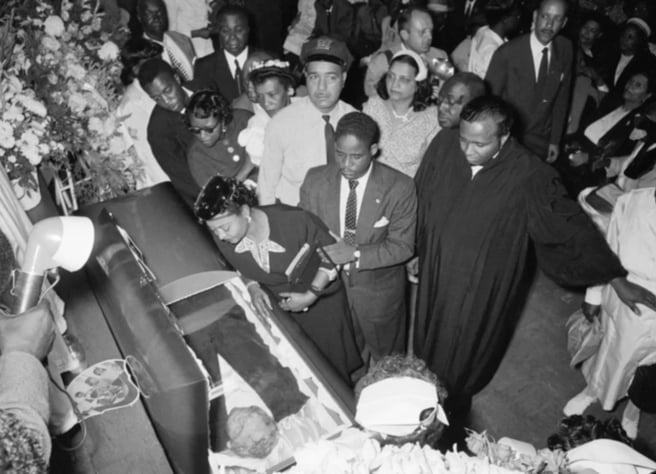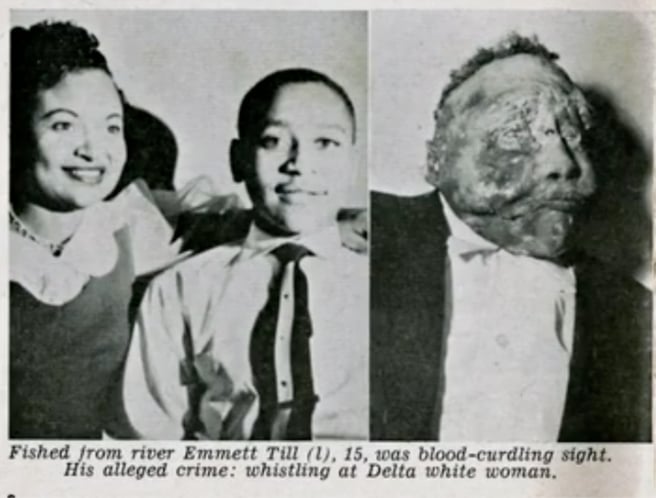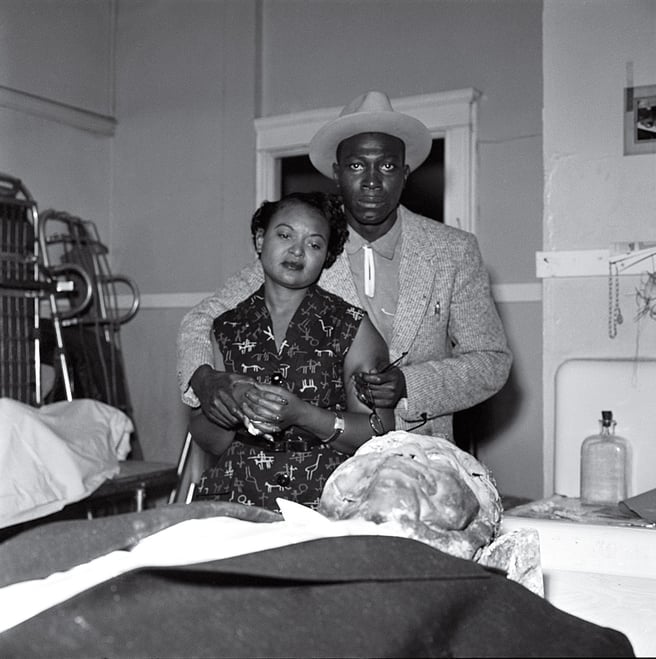_1592355588570.jpg)
This post deals contains graphic images and might be suitable for some readers.
When Mamie Elizabeth Till-Mobley visited her son’s lifeless body after he was beaten to death, he was barely recognisable. It was 1955, and America was deeply segregated. But what Mamie bravely did next for 14-year-old Emmett Till, with a simple black and white photo, would go down in American history.
Watch: Indigenous Lives Matter. Post continues below.
In August that year, Emmett, from Chicago, was in Mississippi visiting relatives. He stopped by Bryant’s Grocery and Meat Market, where he encountered a woman named Carolyn Bryant.
No one really knows what truly transpired between the white woman and the black teenager, especially because Carolyn, years later, long after the boy and his mother changed the country, denied Emmett had touched or spoken to her. But in 1955, four days after simply being in the same shop at the same time, retaliation was sought for Emmett apparently wolf-whistling at Carolyn.
_1592354827848.jpg?width=656) Image: Getty.
Image: Getty.



